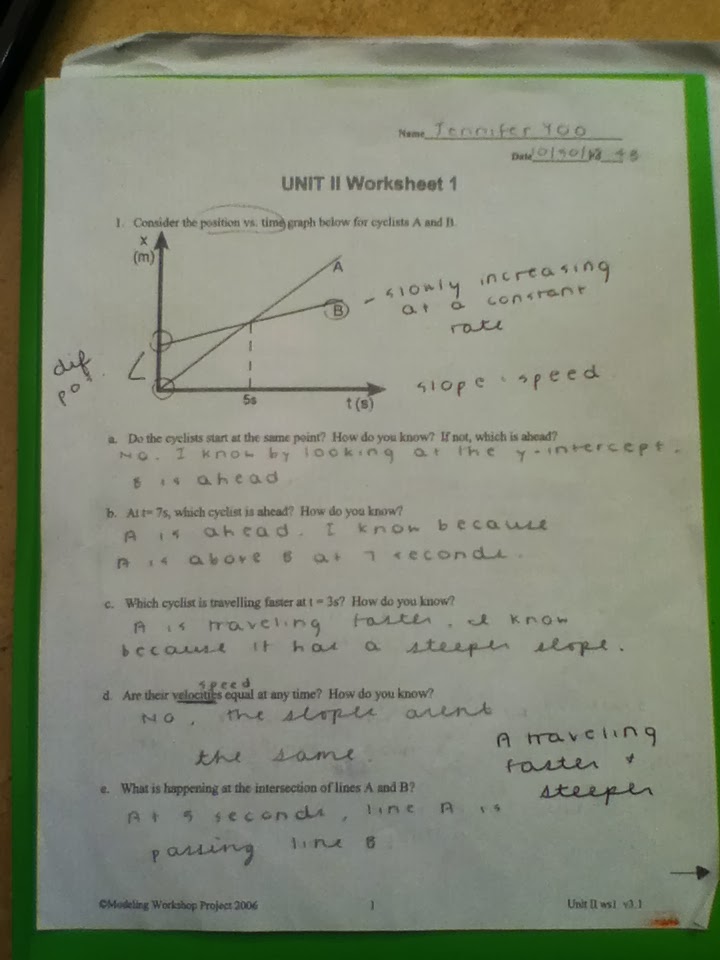Guys, I'm back! How's your thanksgiving break so far? My schedule has been packed, but I'm having tons of fun though. I'm a little disappointed that breaks almost over. :( It's so unfair! I wish it was two weeks long. That would've been awesome! Well anyways, let's get back to physics! My class had a white board discussion last week on Friday. We did not go over the whole packet because there wasn't enough time. I might have not covered all the information here because I wasn't in class for the first 30 minutes. Anyways, the two sheets we analyzed as a class are provided below.
Part 1
Part 2
Part 1.) One of the things my class came to the consensus was that the reference point could be any point on a graph. It does not always have to be at the origin, or the starting point. We also agreed that the cross hatched area on the graph from question 1c represented the total distance traveled by the object. Part 2.) We didn't talk about this one much. We all came to the agreement that for 2d and 2e, all you have to do is count the boxes within the given time. For 2f and 2g, my friend helped me step-by-step on how to determine the average velocity and speed. By the way, we did not go over these ones in class. 2f.) (Formula= final position- initial position over time elapsed) First, figure out the final position the object was at 8 seconds. Then find the initial position at 4 seconds. Take the final position and subtract that by the initial position. (5-7= -2) Lastly, divide that number with the time elapsed, which was 4 seconds. (8-4=4) The final answer you should get is -1/2 m/s. 2g.) (Formula= distance over time) First find the slopes between 4-5 seconds, 5-7 seconds, and 7-8 seconds. In order to find the slope, you must do rise over run. The slope of the first time is 3, the second one is 0, since the object was not moving, and the slope of 7-8 seconds is -5. You must add 3 and 5. Remember, distance can never be negative, so you don't subtract. After you add those two, you divide them by 4. (8-4=4) Your final answer should conclude to 2 m/s.
Reflections: Our class discussion was pretty horrible... There were people arguing and debating whether or not the answer was right. We were literary on the same topic for almost an hour. Not joking. As you can tell, we didn't get that far. Furthermore, the discussion was pretty confusing. When someone asked a question, it was answered unclearly and they just rambled on. My teacher was also pretty upset and yelled at us.


















